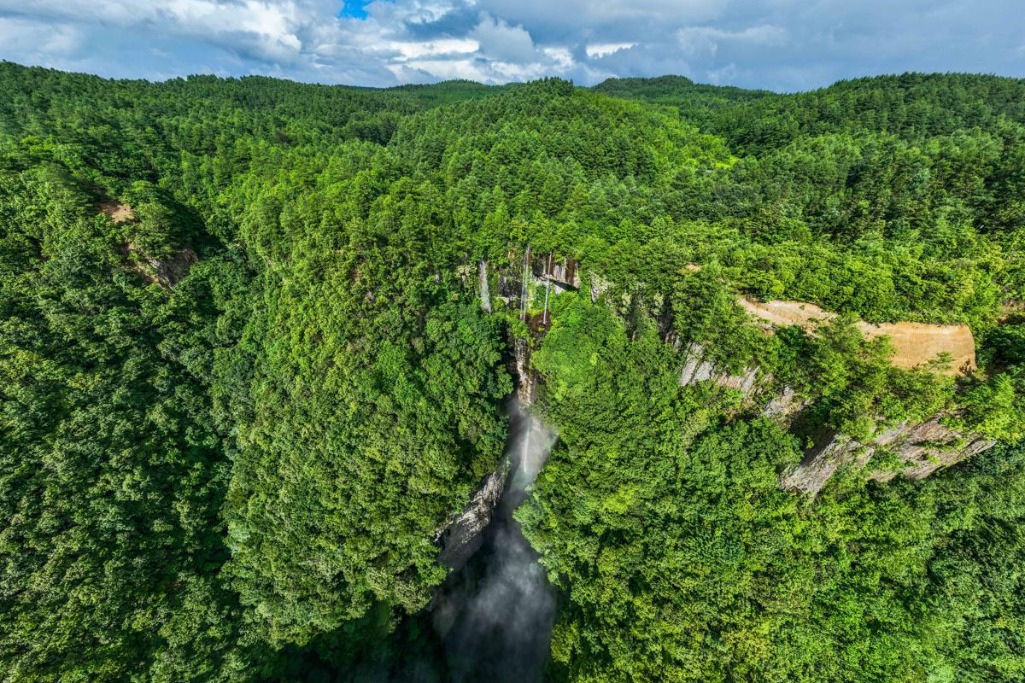Shenzhen at the vanguard of low-carbon development


Ecological accounting
In the longer term, the southern metropolis will build itself into a vanguard of sustainable development and a role model for "harmonious coexistence of human and nature" by 2035. Eco-environmental quality will reach a world-class level by that time, according to the plan.
As part of its green development efforts, the city has established a new ecological accounting system that focuses on contributions made by resources, the environment and ecology to the local economy. The gross ecosystem product, or GEP, system was launched in March last year and is the first complete system of its kind in the country.
According to the International Union for Conservation of Nature, GEP is "the total value of final ecosystem goods and services supplied to human well-being in a region annually, and can be measured in terms of biophysical value and monetary value. Ecosystems that can be measured include natural ecosystems such as forests, grassland, wetland, desert, freshwater and ocean, and artificial systems that are based on natural processes like farmland, pastures, aquaculture farms and urban green land."
Shenzhen generated 130.4 billion yuan ($19.5 billion) in GEP in 2020, according to city government statistics.
The implementation of GEP accounting carries an important meaning for achieving the carbon peak and carbon neutrality goals, as it provides a data basis for it by monitoring and evaluating the ecosystem's carbon sink, the Shenzhen Municipal Ecology and Environment Bureau said in a written reply to China Daily. A carbon sink is a forest, ocean or other natural environment that absorbs carbon dioxide from the atmosphere.
The accounting system also helps the government formulate ecosystem management measures in a scientific way, providing technical support for fulfilling the goals, the bureau said.
In addition, the bureau said it is exploring the possibility of applying the GEP system in city management.
"Based on GEP accounting, we are able to figure out those high-value areas and low-value areas in the city. Then we could strengthen ecological protection of those high-value areas to enhance ecological quality there," it said.
"The system could also provide a reference for site selection in urban development and construction. Prioritizing the development of low-value areas could reduce the negative impact of the activities on the environment," the bureau added.
Carbon trading has also played a significant role in Shenzhen's green drive. The city began its carbon trading operation, the first in the country, at the China Emissions Exchange in June 2013.
Thirty-two sectors, including industrial manufacturing, electricity, water, gas, public buses, subways, ports and hazardous waste disposal have been covered in the carbon trading market, with the total number of enterprises reaching 750 by the end of last year.
Since the launch of the market, carbon dioxide emissions among manufacturing enterprises were reduced by 40.29 percent on average as of the end of 2020, while industrial added value to GDP had increased 61.64 percent.
The city's carbon trading market accounted for 13 percent of the nation's total in terms of both transaction volume and value by the end of 2020.
Shenzhen has unique features in developing the carbon trading market, said Jiang Can, assistant general manager of China Emissions Exchange.
"Compared with other pilot cities, Shenzhen's status as a special economic zone means that it has the power of legislation. The launch of several regulations and rules in the city has laid a solid legal foundation for the development of the market," she said.
"It has also played a demonstration role in the country's carbon market development in a number of aspects, such as institutional design and carbon-related financial products."
Shenzhen International Low Carbon City, the only key development zone in Shenzhen that features green development, is directly across the small river that runs past the Xinqiao historical residence area.
Since the project was launched in 2012, the 53-square-kilometer zone has been striving to develop itself into a hub for the low-carbon industry and has achieved great progress.
A number of architecture projects in the zone have been built using the highest level of green building standards. The city's first line for hydrogen-fueled buses was launched there, and hundreds of high-tech enterprises have set up business in the zone.
- Progress in IP protection attracting more foreign innovators
- Ten photos from across China: July 11 – 17
- Nation's health outcomes gain recognition
- Sichuan's ethnic festival attracts thousands of tourists
- SCO Digital Economy University Alliance launched
- Experience from a first-person perspective a sniper shooting from a boat




































